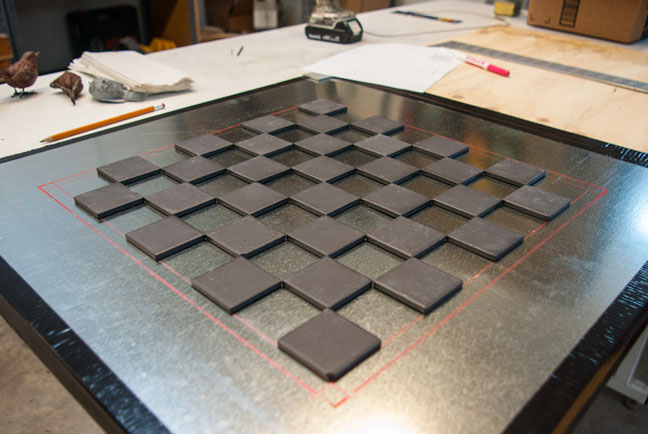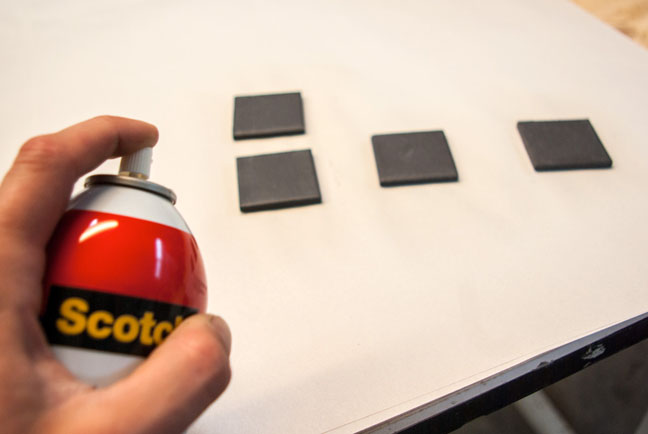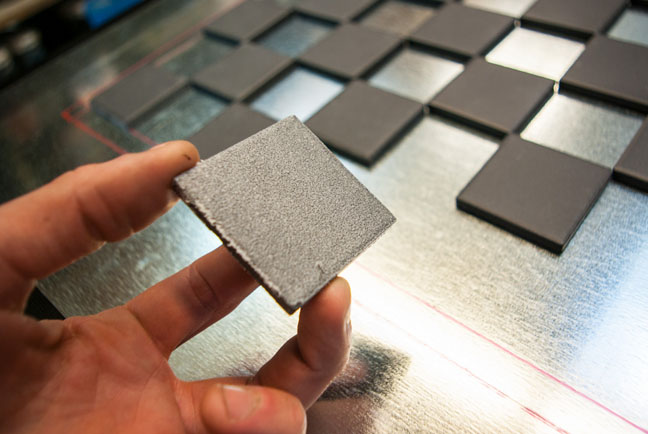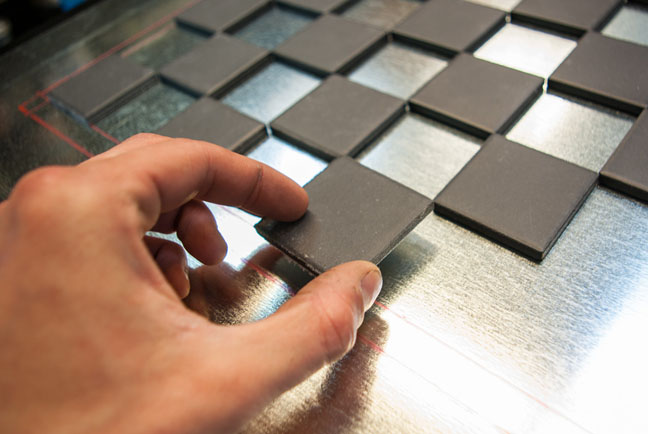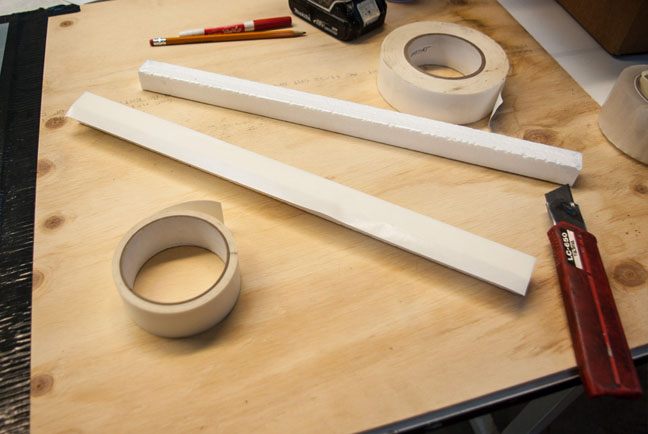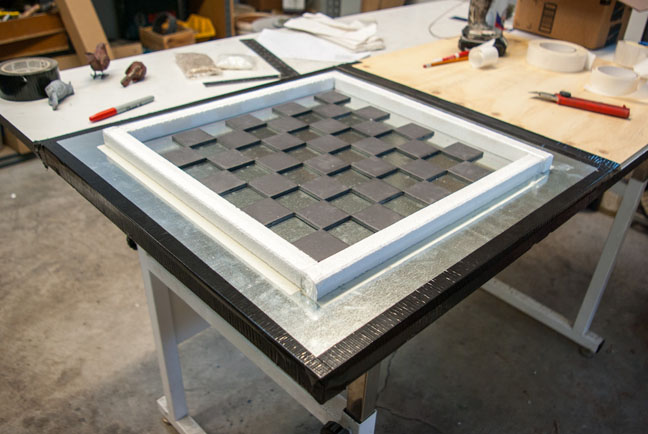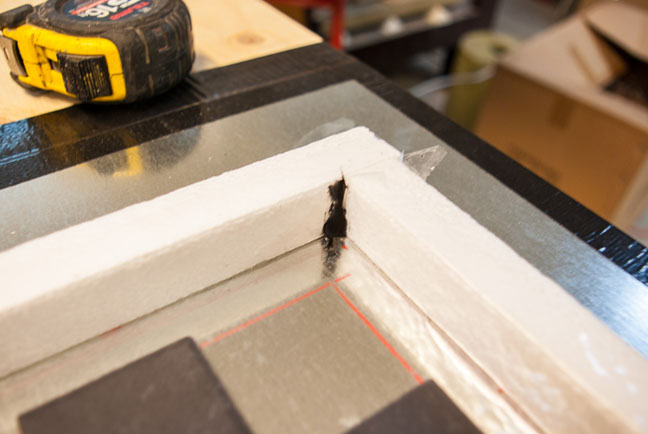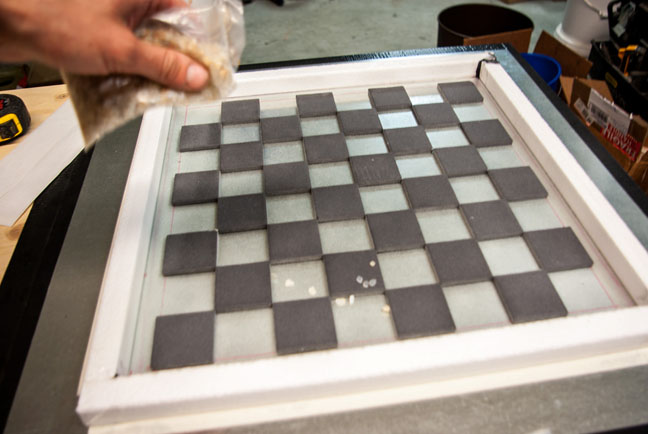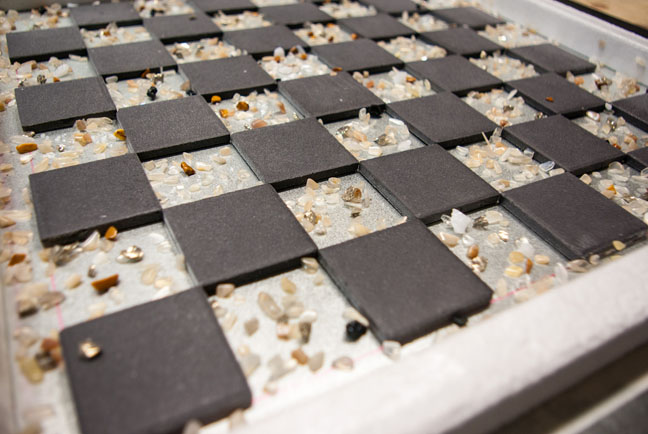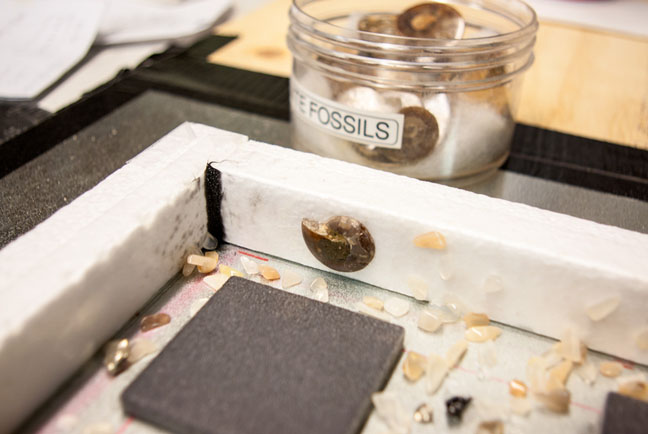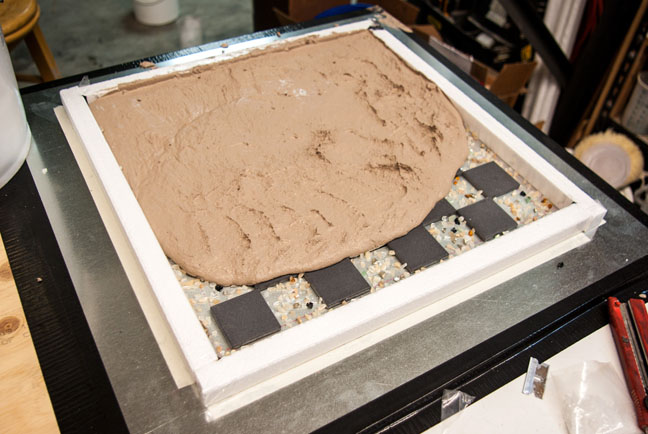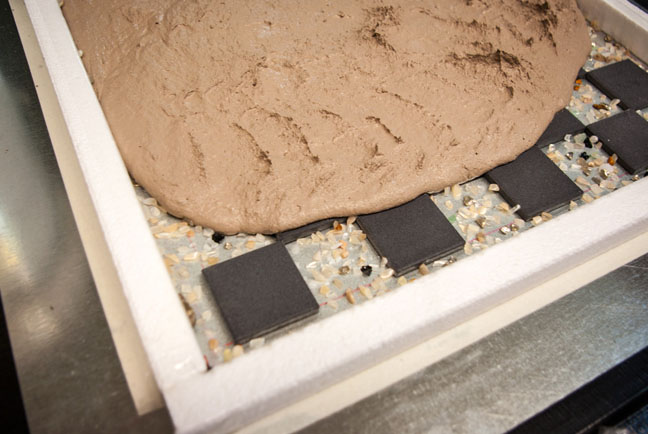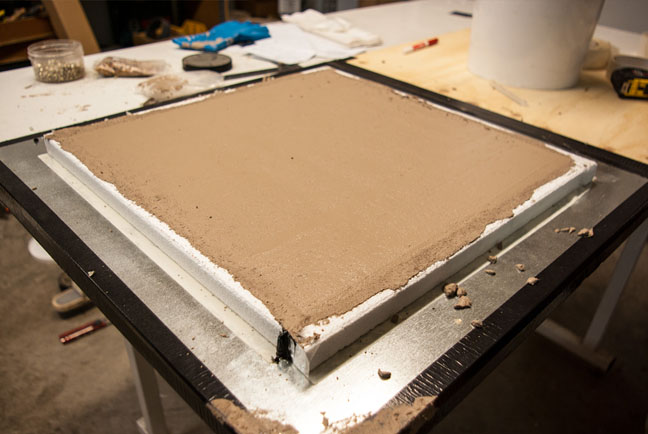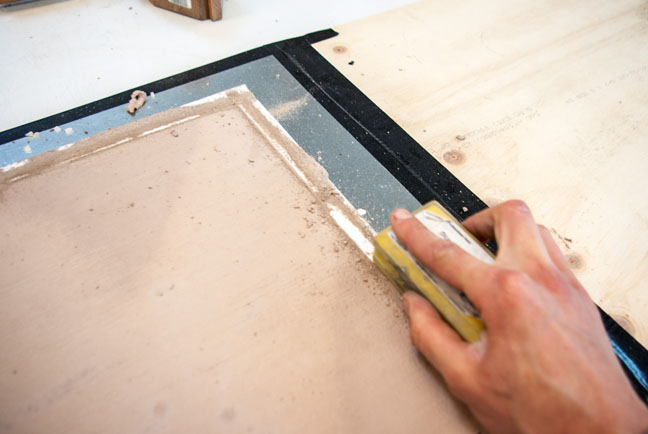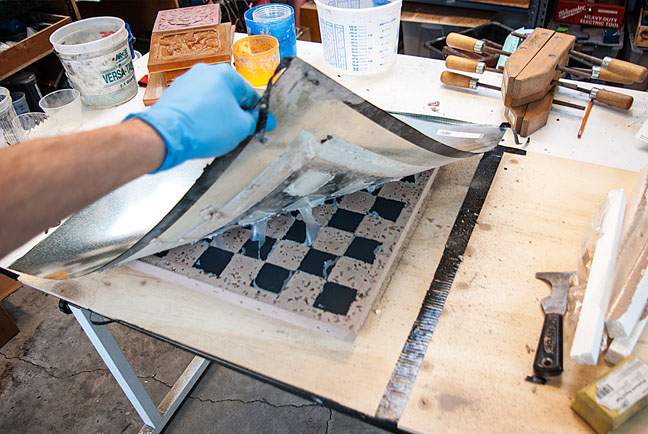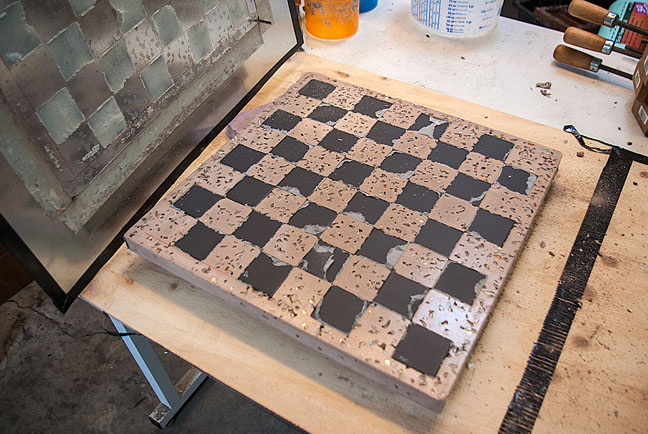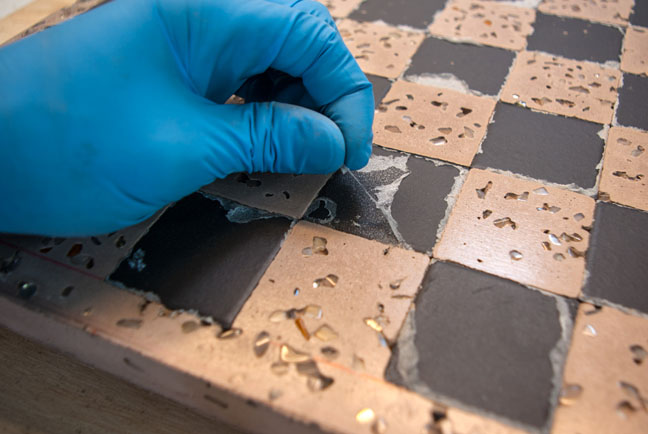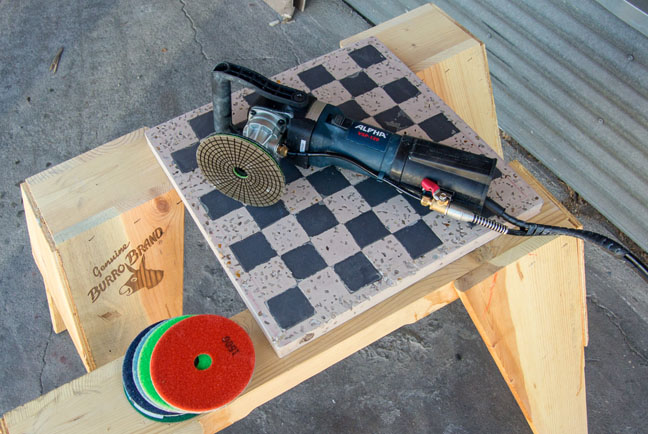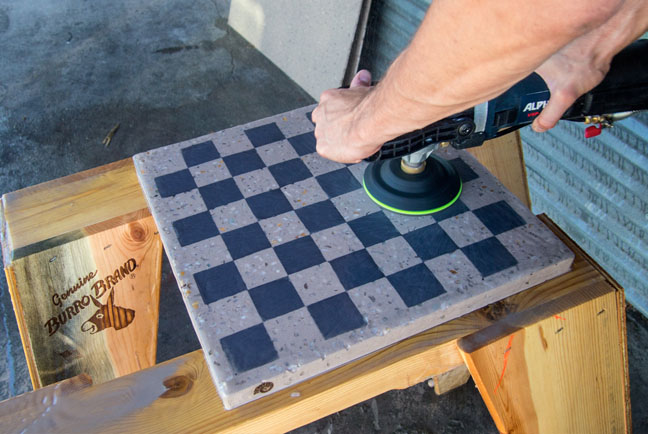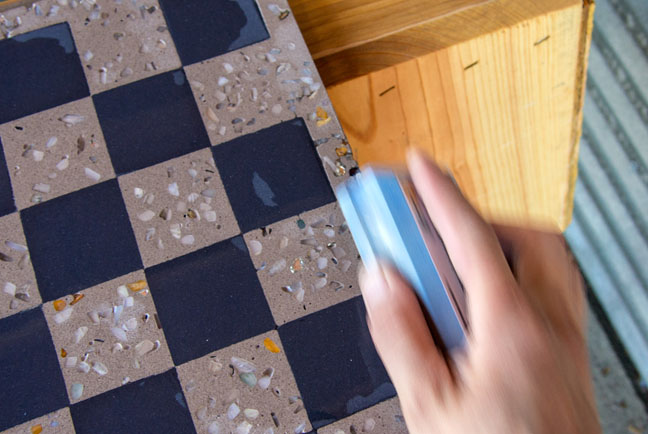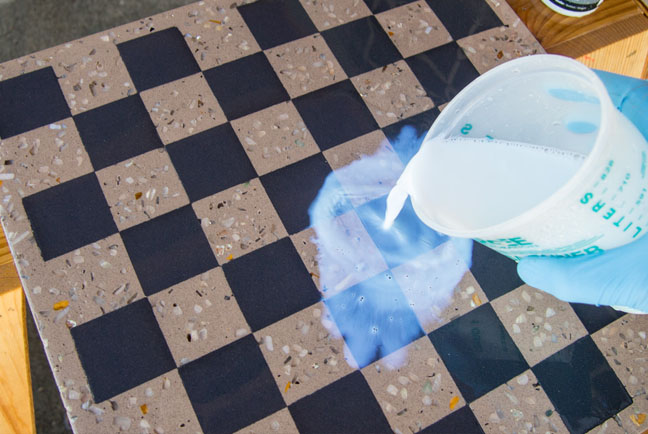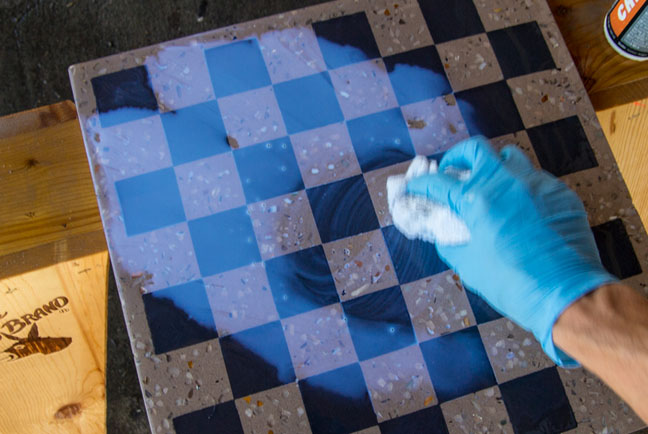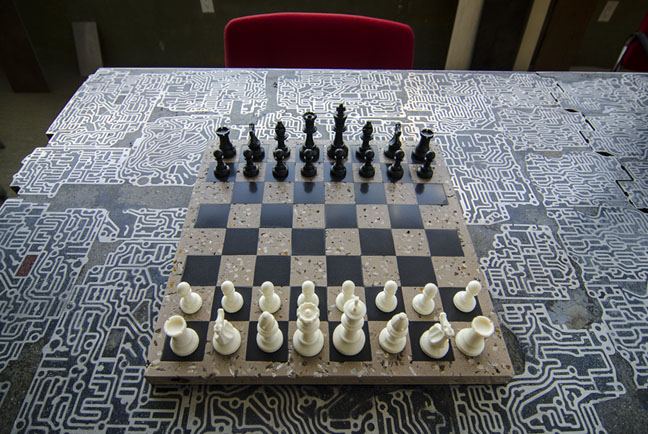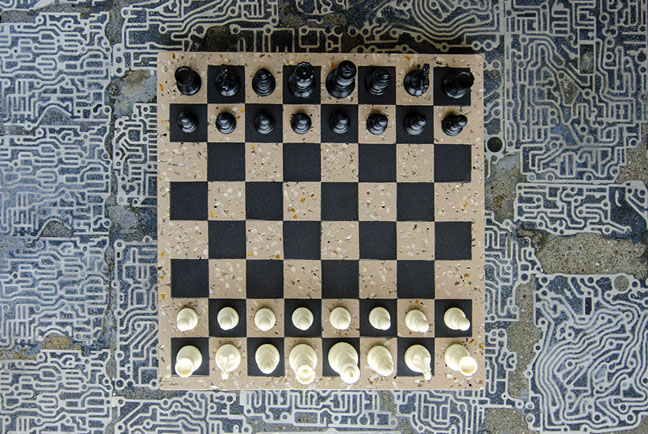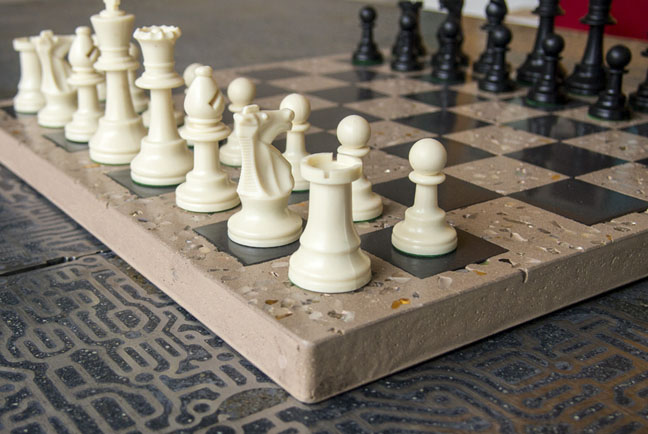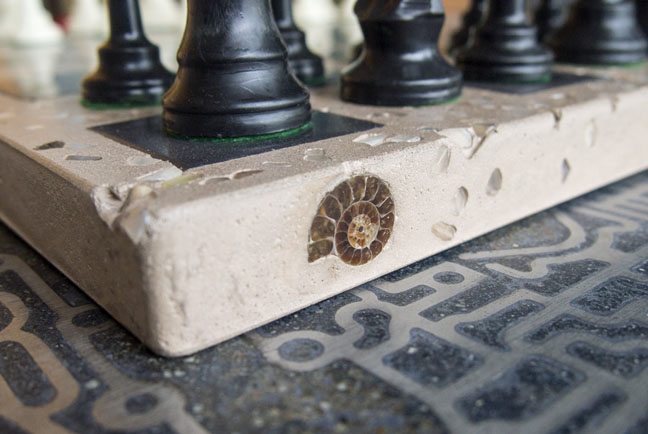Chessboard
Materials + Supplies:
• 10 lbs. ShapeCrete
• Rubber Gloves, Safety Glasses, Dust Mask
• Galvanized Sheet
• Ruler and Marker
• Square Tiles
• Spray Adhesive
• Foam Walls
• Clear Packing Tape
Tools:
• Variable Speed Concrete Polisher and Pads (optional)
• Diamond Hand Pads
• Trowel
Size: 16-3/8" x 16-3/8" x 1"
Color: Portabella
Technique: Cast
Chessboard
Here's an easy way to cast a concrete chessboard using square mosaic tiles. We picked up the tiles from our friends at the Mosaic Institute in Berkeley.
The same techniques can also be used to cast small or even large tabletops.
STEP 1: Mark it out
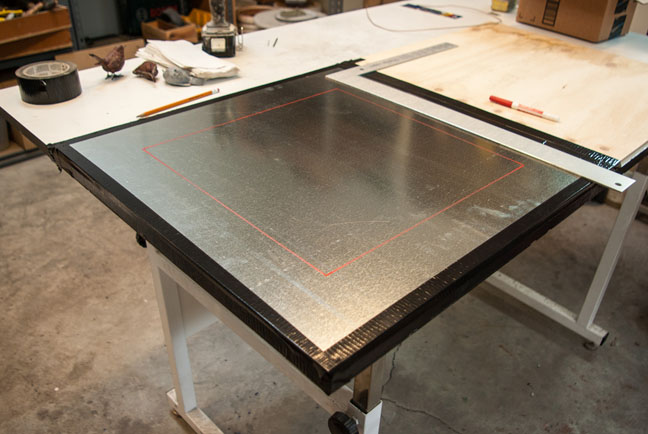
Casting Surface:
For this project we used a sheet of galvanized steel. You could also use a thin sheet of acrylic or similar plastic. You can also use a piece of 1/2" thick Melamine. 3/4" sheet materials will work, but it's a lot easier to remove from the concrete if you stick with something thin.
There's a piece of plywood underneath the galvanized steel so it sits flat. It's taped around the edges to keep it from sliding around.
Tiles:
The tiles used here are 1-7/8" square. This is a pretty good size for standard chess pieces. Ideally the tiles are completely flat on one side. If you plan on polishing the tiles can't be glazed or you'll polish through the glaze.
Mark out the perimeter:
This piece is 16-3/8" square. This is the size that worked out with the 1-7/8" tiles, plus a 1/2" border.
STEP 2: Glue tiles down
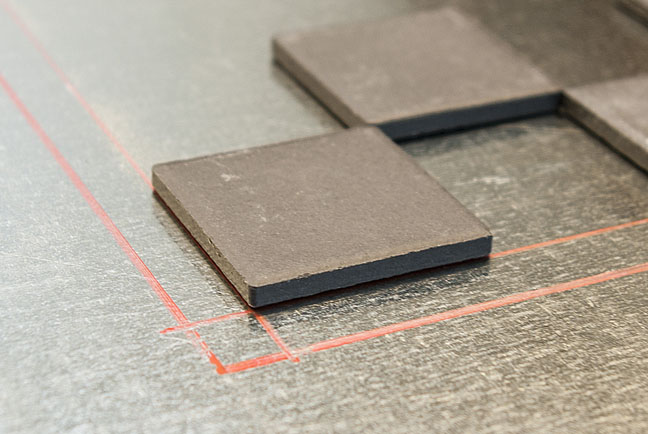
Glue the tiles in place with spray adhesive.
PRO TIP: Spray one side of the tile, press it down in place, lift it up, spray more adhesive, wait a bit, then press it back down. This is an easy way to get adhesive on both surfaces without having to spray the casting surface, which would have to be cleaned up later.
STEP 3: Add the walls
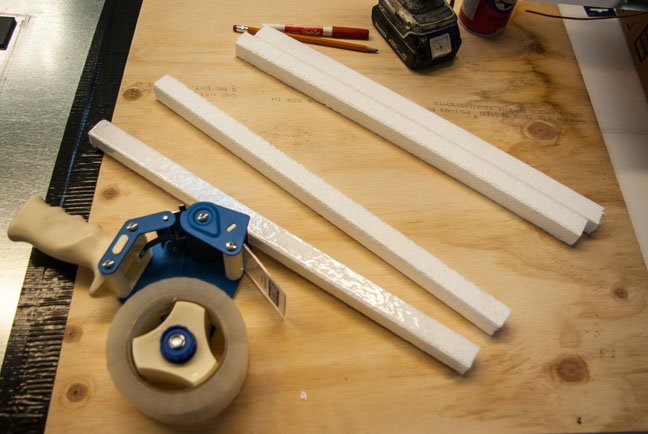
Stick the form walls in place. Here we're using 1" strips of styrofoam and double-sided carpet tape.
Put clear packing tape on the inside surface. This will give the concrete a smooth finish and will make removing the foam really easy.
Seal up any large gaps with silicone caulk.
STEP 4: Decorative Aggregate and Details
We sprinkled decorative aggregate (Moonstone) into the form. This will show up on the surface when the piece is polished.
You can also stick other decorative details to the form walls like rubber stamps or decorative minerals, or in this case a fossilized ammonite.
STEP 5: Cast
Mix ShapeCrete to a Casting Mix Consistency and fill the form completely.
Vibrate the form by moving it side to side and by lifting one edge and dropping it to the table. ShapeCrete doesn't need a lot of vibration to get a really tight surface, but the decorative aggregate can trap a lot of air.
Cover the piece with plastic and let it cure.
STEP 6: Cure and Demold
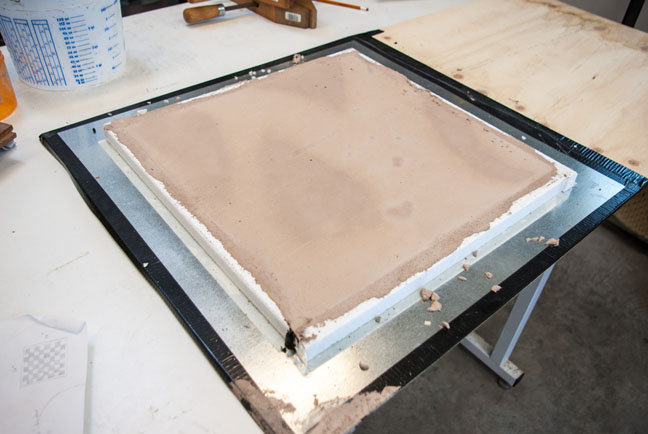
Let the piece cure for 2-3 days.
Pry away the foam walls.
Flip the piece over and peel up the galvanized sheet.
Clean up the extra spray adhesive.
STEP 7: Polish and Seal
The piece is now polished with a variable speed concrete polisher to expose the decorative aggregate. Just like sandpaper, you work up to a high polish through various grits / pads.
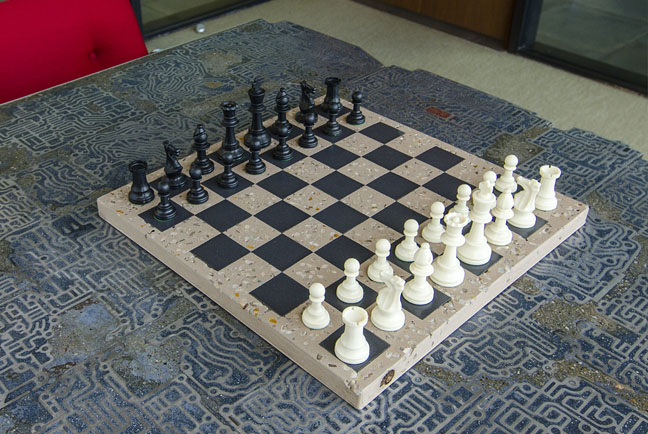

.jpg)
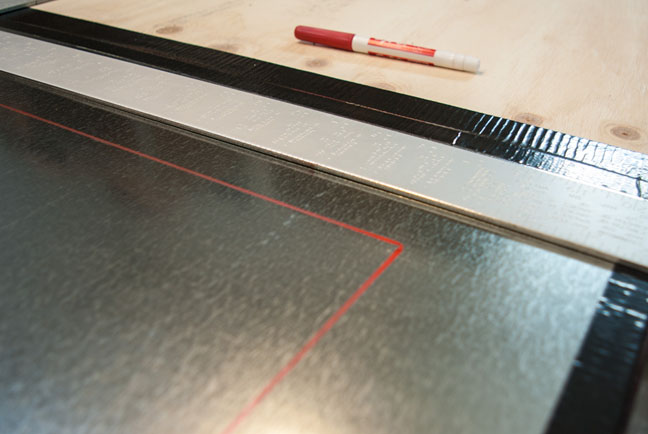
.jpg)
